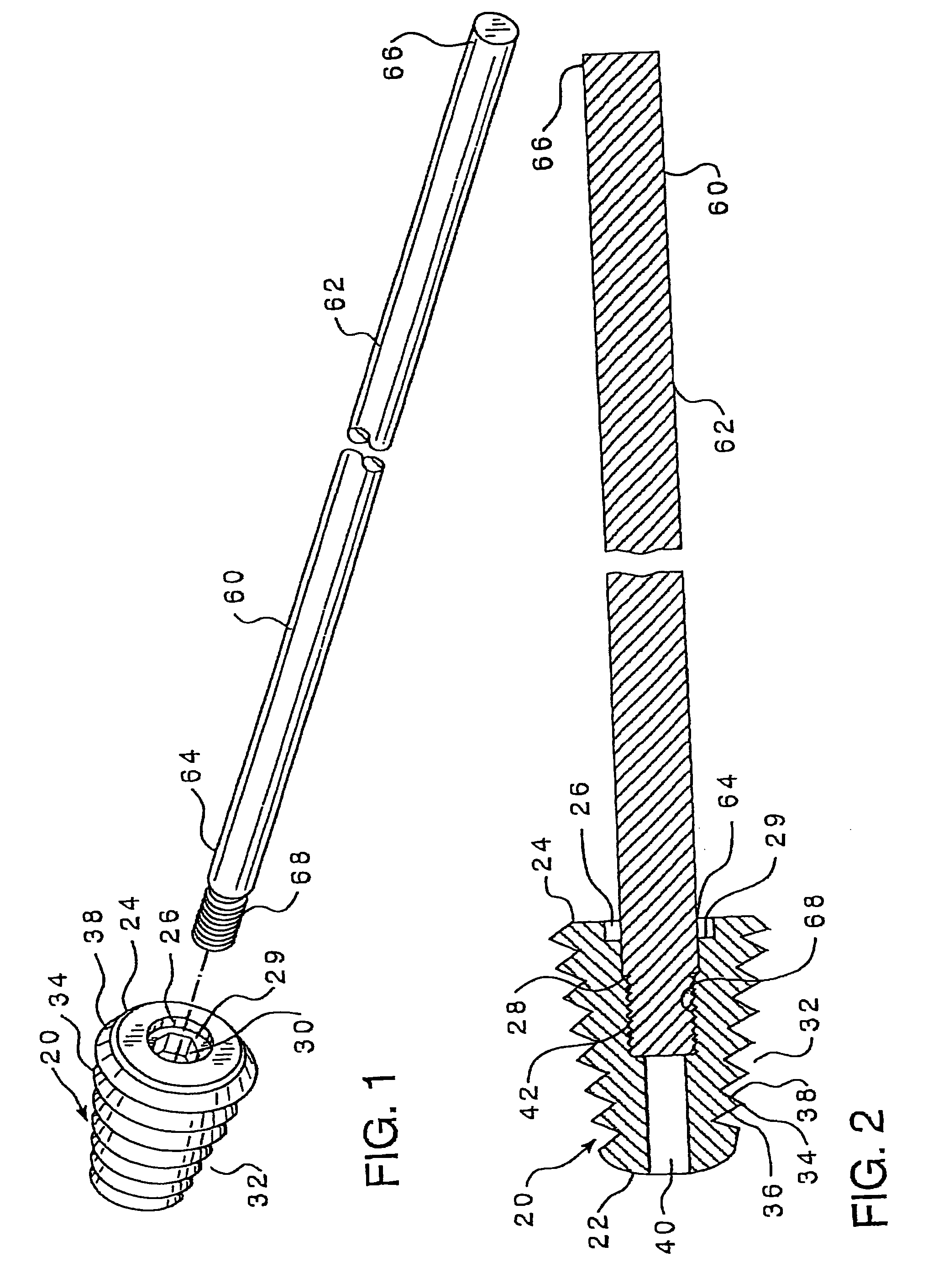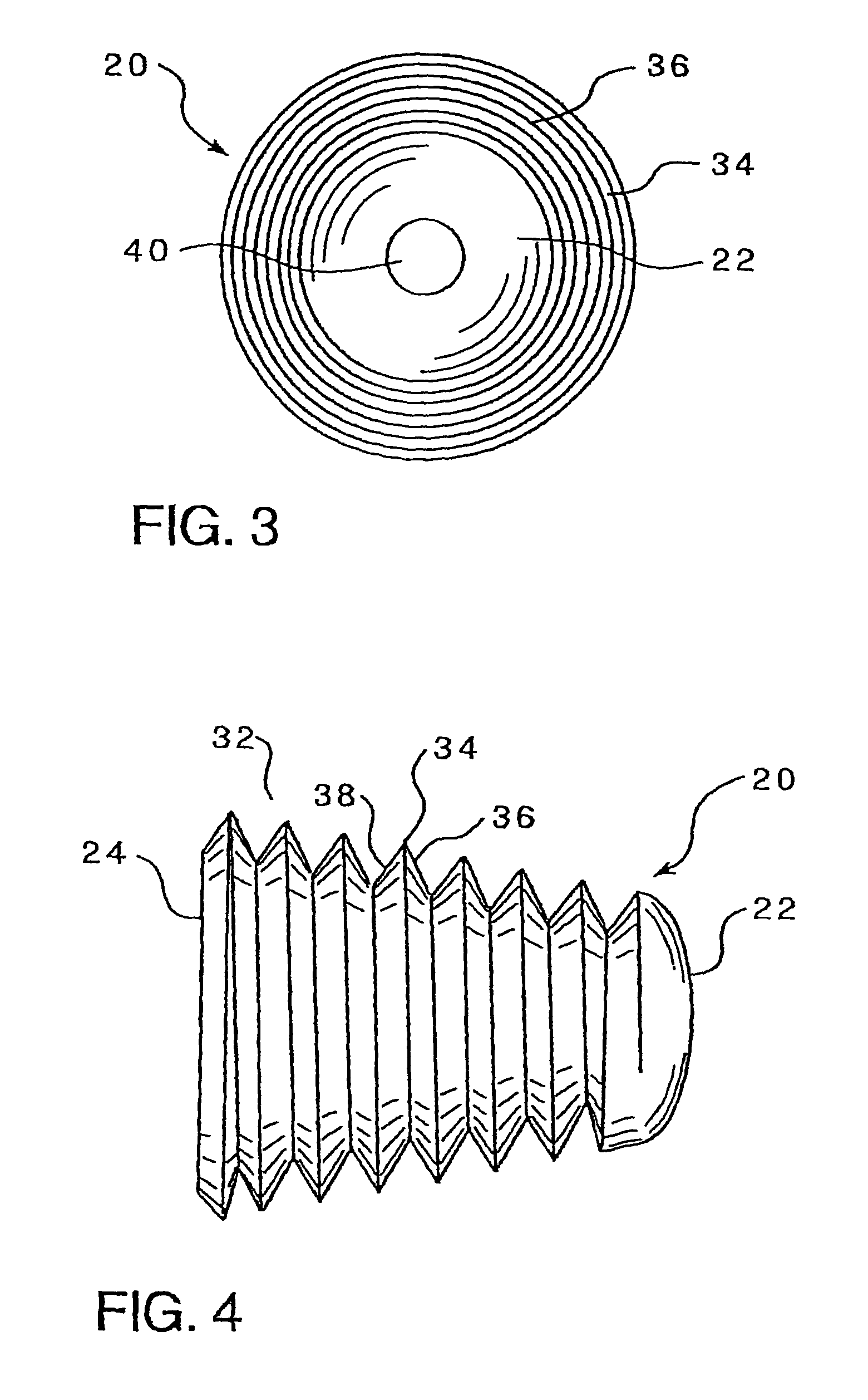Subtalar implant and methods of use thereof
a technology of subtalar implants and implants, applied in the field of surgical implants, can solve the problems of poor anatomical fit with the stj structure, lack of positioning control capabilities of modern implants, etc., and achieve the effect of facilitating proper positioning of subtalar implants
- Summary
- Abstract
- Description
- Claims
- Application Information
AI Technical Summary
Benefits of technology
Problems solved by technology
Method used
Image
Examples
Embodiment Construction
[0022]Referring to FIGS. 1 through 8 in which similar reference characters refer to similar parts throughout the several views thereof, the present invention comprises an implant 20 and a positioning element 60 and methods for using the positioning element 60 to position the implant 20 in the sinus tarsi adjacent the subtalar joint (STJ). The correct positioning of the implant 20 with the positioning element 60 in the sinus tarsi is essential for correcting manifestations of problems associated with various types of flat foot disorders.
[0023]Referring generally to FIGS. 1-8, the implant 20 is generally frustoconically shaped. The implant 20 is configured with the external features of a low domed distal end 22 with preferred radii, a threaded surface 32 with v-shaped threads 34, and a flat proximal end 24 with preferred diameters as shown particularly in FIGS. 4 and 6. The v-shaped threads 34 consist of one continuous thread that begins at the low domed distal end 22, wraps around th...
PUM
 Login to View More
Login to View More Abstract
Description
Claims
Application Information
 Login to View More
Login to View More - R&D
- Intellectual Property
- Life Sciences
- Materials
- Tech Scout
- Unparalleled Data Quality
- Higher Quality Content
- 60% Fewer Hallucinations
Browse by: Latest US Patents, China's latest patents, Technical Efficacy Thesaurus, Application Domain, Technology Topic, Popular Technical Reports.
© 2025 PatSnap. All rights reserved.Legal|Privacy policy|Modern Slavery Act Transparency Statement|Sitemap|About US| Contact US: help@patsnap.com



